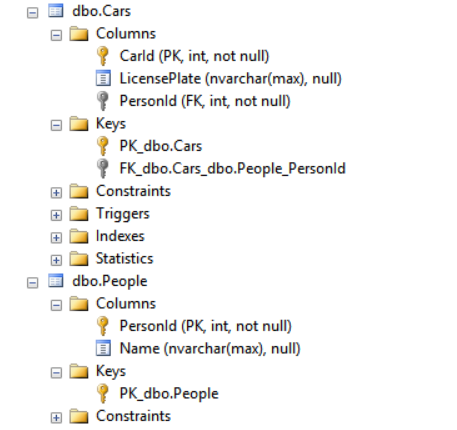Entity Framework Mapping relationship with Entity Framework Code First: One-to-many and Many-to-many Mapping one-to-many
Example
So let's say you have two different entities, something like this:
public class Person
{
public int PersonId { get; set; }
public string Name { get; set; }
}
public class Car
{
public int CarId { get; set; }
public string LicensePlate { get; set; }
}
public class MyDemoContext : DbContext
{
public DbSet<Person> People { get; set; }
public DbSet<Car> Cars { get; set; }
}
And you want to setup a one-to-many relationship between them, that is, one person can have zero, one or more cars, and one car belongs to one person exactly. Every relationship is bidirectional, so if a person has a car, the car belongs to that person.
To do this just modify your model classes:
public class Person
{
public int PersonId { get; set; }
public string Name { get; set; }
public virtual ICollection<Car> Cars { get; set; } // don't forget to initialize (use HashSet)
}
public class Car
{
public int CarId { get; set; }
public string LicensePlate { get; set; }
public int PersonId { get; set; }
public virtual Person Person { get; set; }
}
And that's it :) You already have your relationship set up. In the database, this is represented with foreign keys, of course.

